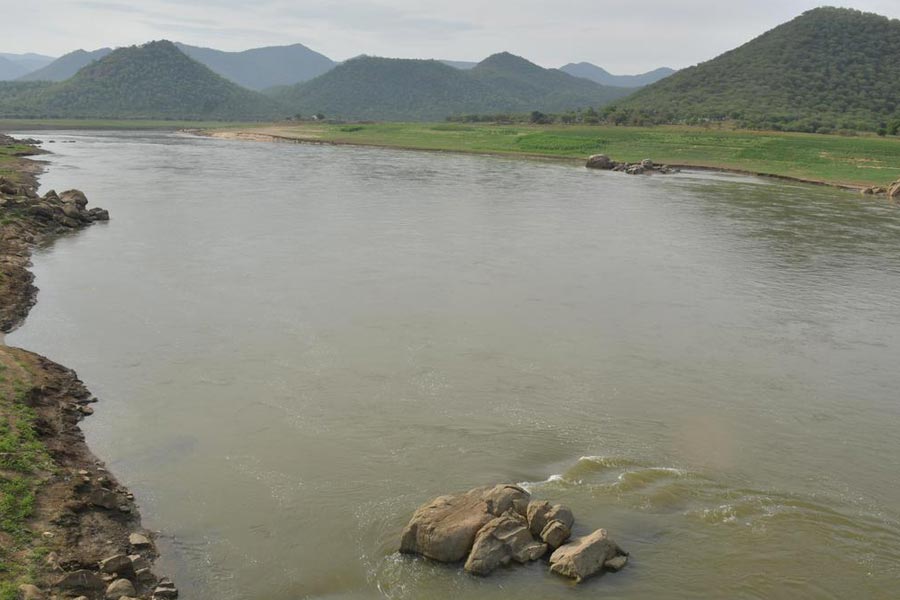Karnataka starts releasing water on CWMA directives
Context
Karnataka has started releasing water from its reservoirs to Tamil Nadu following the instructions of the Cauvery Water Management Authority (CWMA).
On Wednesday morning, there was an outflow of 4,398 cusecs (cubic feet per second) into the Cauvery from the Krishnaraja Sagar (KRS) reservoir in the Mandya district compared to an inflow of 2,300 cusecs.
What is the Cauvery River Dispute?
The Cauvery water dispute is a prolonged and intricate water-sharing dispute between the Indian states of Karnataka and Tamil Nadu, as well as other governments that have stakes in the river’s water, including Kerala and Puducherry. The issue is on the fair allocation of water from the Cauvery River, which runs through these states and is a crucial resource for agriculture, drinking water, and several other uses.
What is the Cauvery Water Management Authority?
- The Government of India formed the Cauvery Water Management Authority (CWMA) as a regulatory agency to supervise the Cauvery Water Management Scheme’s execution.
- The plan was developed to manage and control the distribution of water from the Cauvery River among the competing interests and previous water-sharing issues between the states of Karnataka, Tamil Nadu, Kerala, and Puducherry.
- The Inter-State River Water Disputes Act, 1956—more particularly, Section 6A—was the legal framework under which the CWMA was established. Its main goal is to make sure that the Cauvery Water Disputes Tribunal’s judgments and instructions, as well as any alteration that the Supreme Court of India makes to those judgments, are carried out effectively.
What are the roles and functions of the CMA?
- Allocation and Distribution: The CWMA is in charge of calculating and distributing the amount of water that each state is entitled to receive from the Cauvery River. This distribution is based on variables like historical usage, river flows, and state needs.
- Water Release Control: The Cauvery River Authority controls the release of water from reservoirs and dams, ensuring that the designated amounts are released following the established schedules. This includes controlling water releases at different times of the year to satisfy needs for agriculture and other purposes.
- Monitoring and Enforcement: The CWMA keeps an eye on the water that is released and makes sure that the states stick to their allotted shares. If there are violations or anomalies in the water releases, it has the power to take action.
- Resolution of Disputes: The CWMA is entrusted with mediating and resolving such matters between the involved governments in cases of disputes or conflicts relating to water sharing.
- Review and Adaptation: The authority has the power to review and modify decisions in light of evolving situations to maintain fairness and efficiency in the distribution of water.
- Communication and Reporting: The CWMA informs the concerned states of its decisions, recommendations, and reports, promoting accountability and openness in the process of allocating and distributing water.
What is the role of the Cauvery Water Management Authority (CMA) in resolving the issue?
- Water Release: Karnataka has begun providing water to Tamil Nadu from its reservoirs following CWMA instructions. Water is being released from reservoirs such as Kabini and Krishnaraja Sagar (KRS).
- Release details: Release Information According to reports, the inflow into the Krishnaraja Sagar (KRS) reservoir was 2,300 cusecs, and the outflow from the reservoir was 4,398 cusecs. The Kabini reservoir was said to have an output of 2,000 cusecs. 6,398 cusecs would be the total output from both reservoirs combined.
- CWMA Order: From September 8 to September 12, the CWMA ordered Karnataka to ensure a daily discharge of 5,000 cusecs of water at Billigundulu on the interstate border. Karnataka claimed it couldn’t release this sum, however, the CMWA upheld the recommendation.
What are the difficulties faced by both sides with the release of the water?
Karnataka
- Water scarcity: Karnataka frequently claims that it has a water shortage because of little rainfall and low reservoir levels. Releasing water to Tamil Nadu may make the state’s water scarcity worse, impacting agricultural activity and the availability of water for other uses.
- Impact on agriculture: Farmers in Karnataka heavily rely on the Cauvery’s water for irrigation, making it a significant industry. When water is released to Tamil Nadu during crucial agricultural seasons, Karnataka’s agricultural requirements may suffer.
- Drought Conditions: Karnataka contends that drought conditions exist in its regions, particularly in the Cauvery basin, which makes it challenging to reserve water for states farther downstream. This justification is frequently used to show why prioritizing its own water needs is necessary.
- Local opposition: Communities that depend on the waters of the Cauvery River and agricultural organizations may resist the delivery of water to Tamil Nadu. The administration must strike a balance between these regional issues and its legal commitments.
Tamil Nadu
- Agricultural Dependence: Tamil Nadu, especially the Cauvery delta region, primarily relies on the Cauvery’s waters for irrigation. Water shortages can have a direct influence on farmers’ livelihoods and agricultural output.
- Legal Requirements: Tamil Nadu frequently invokes the legal requirements established by the Supreme Court’s rulings and the Cauvery Water Disputes Tribunal’s judgements, asserting that the state is legally entitled to a particular share of the Cauvery’s waters. There may be disagreements and legal action if the water allotted is not received.
- Political and Social Pressure: In Tamil Nadu, the desire for Cauvery water is a major political and social issue. The government is under pressure from numerous social groups to maintain a steady flow of water, and any apparent failure to uphold the interests of the state could have political repercussions.
- Crop Patterns: The availability of Cauvery water is taken into consideration when designing Tamil Nadu’s agricultural techniques and crop patterns. Crop yields and agricultural planning can both be impacted by insufficient water supplies.
What is the way forward to resolve the issue?
- Negotiations and dialogue: To address each state’s individual water needs, concerns, and potential solutions, all parties should participate in direct and positive negotiations. A cooperative strategy can promote communication and trust between the parties.
- Scientific Data and Analysis: It is essential for making well-informed judgments to rely on reliable and current scientific data regarding river flows, rainfall patterns, and water availability. Independent specialists can contribute by offering objective analysis to direct conversations.
- Innovative Water Management: Investigating cutting-edge water management strategies can aid in maximizing the use of water for domestic, industrial, and agricultural uses. This can entail encouraging the use of water-wise farming techniques and making investments in water storage and conservation methods.
- Environmental considerations: It’s crucial to acknowledge the river’s ecosystems’ environmental stability. Practices for managing water sustainably should strive to preserve the overall health of the river basin while taking ecological effects into account.


